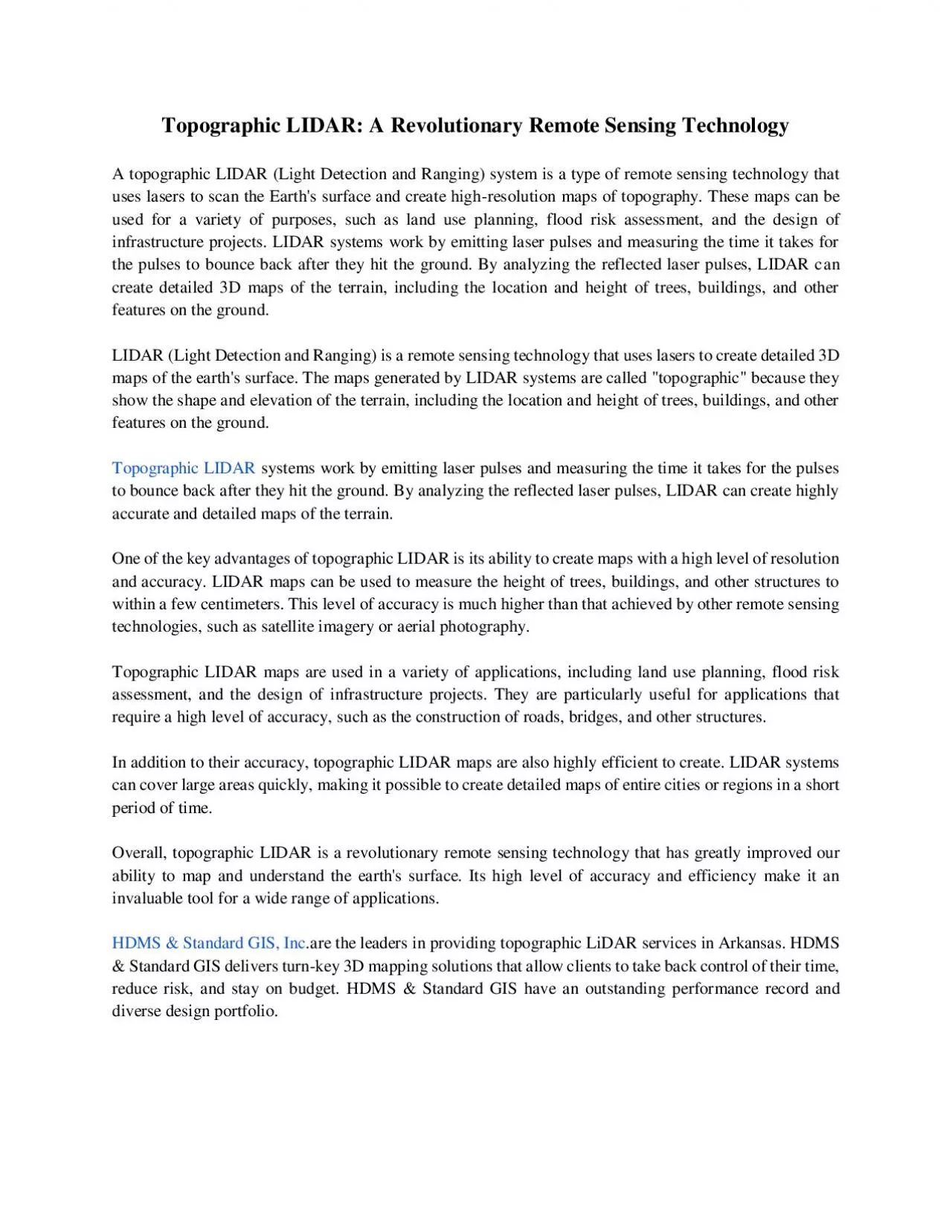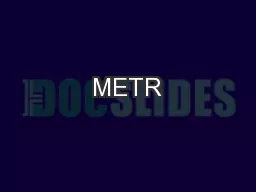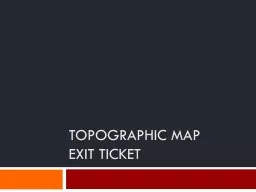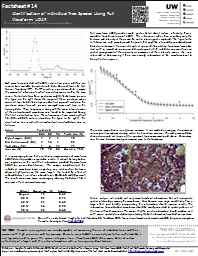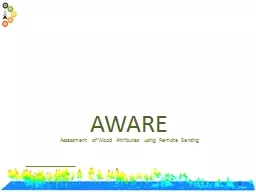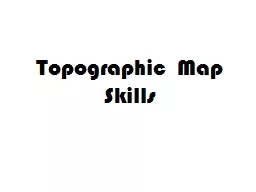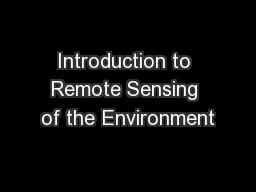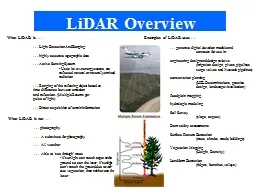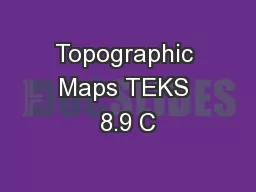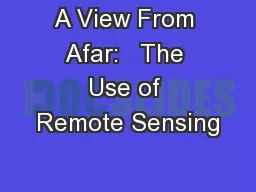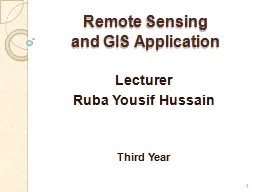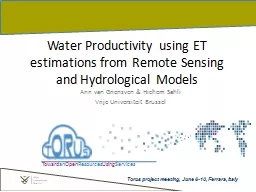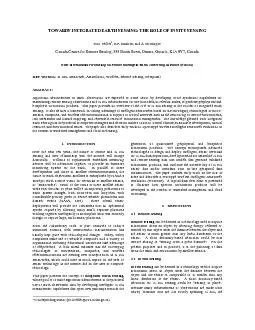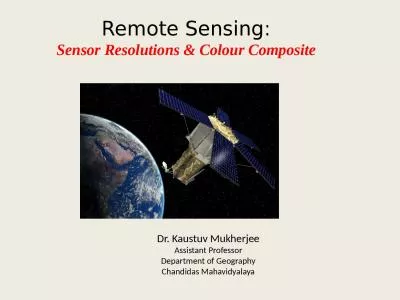PDF-Topographic LIDAR: A Revolutionary Remote Sensing Technology
Author : Hdmsarch | Published Date : 2023-01-11
A topographic LIDAR Light Detection and Ranging system is a type of remote sensing technology that uses lasers to scan the Earths surface and create highresolution
Presentation Embed Code
Download Presentation
Download Presentation The PPT/PDF document "Topographic LIDAR: A Revolutionary Remot..." is the property of its rightful owner. Permission is granted to download and print the materials on this website for personal, non-commercial use only, and to display it on your personal computer provided you do not modify the materials and that you retain all copyright notices contained in the materials. By downloading content from our website, you accept the terms of this agreement.
Topographic LIDAR: A Revolutionary Remote Sensing Technology: Transcript
Download Rules Of Document
"Topographic LIDAR: A Revolutionary Remote Sensing Technology"The content belongs to its owner. You may download and print it for personal use, without modification, and keep all copyright notices. By downloading, you agree to these terms.
Related Documents

